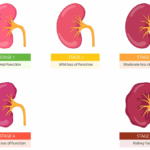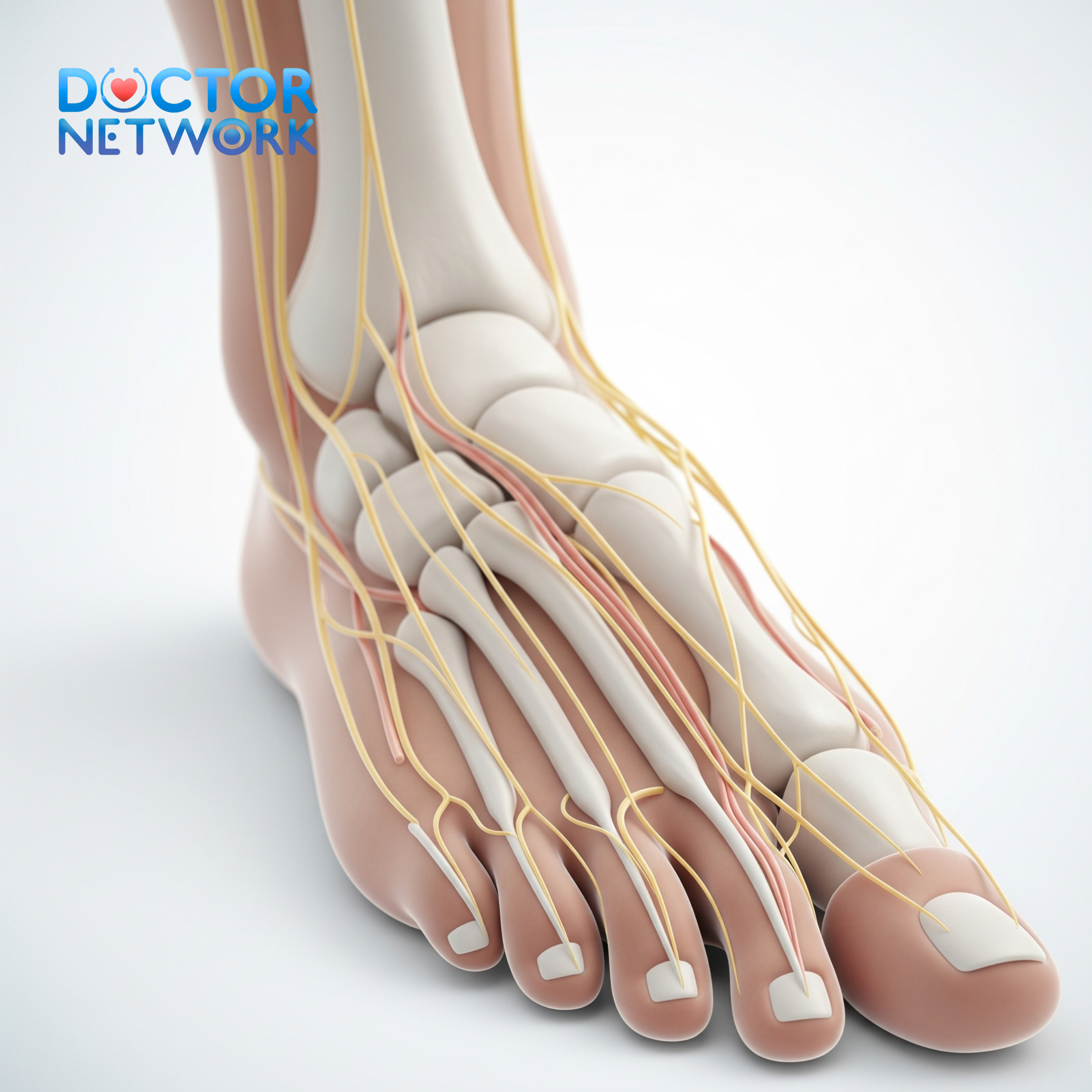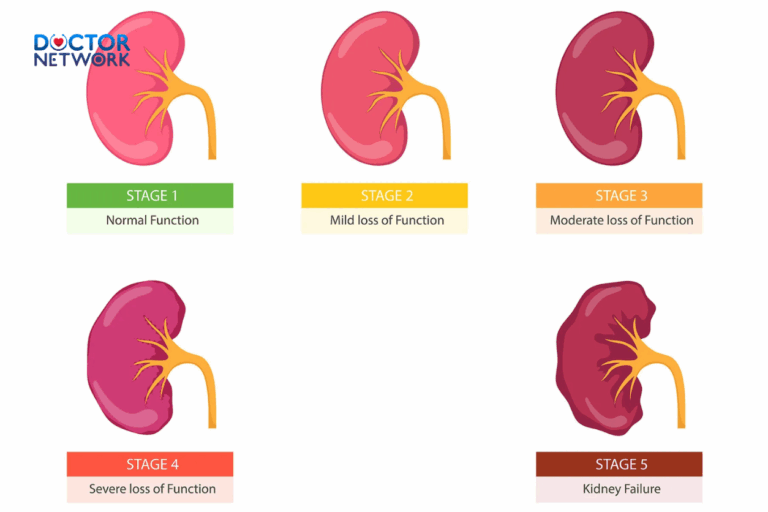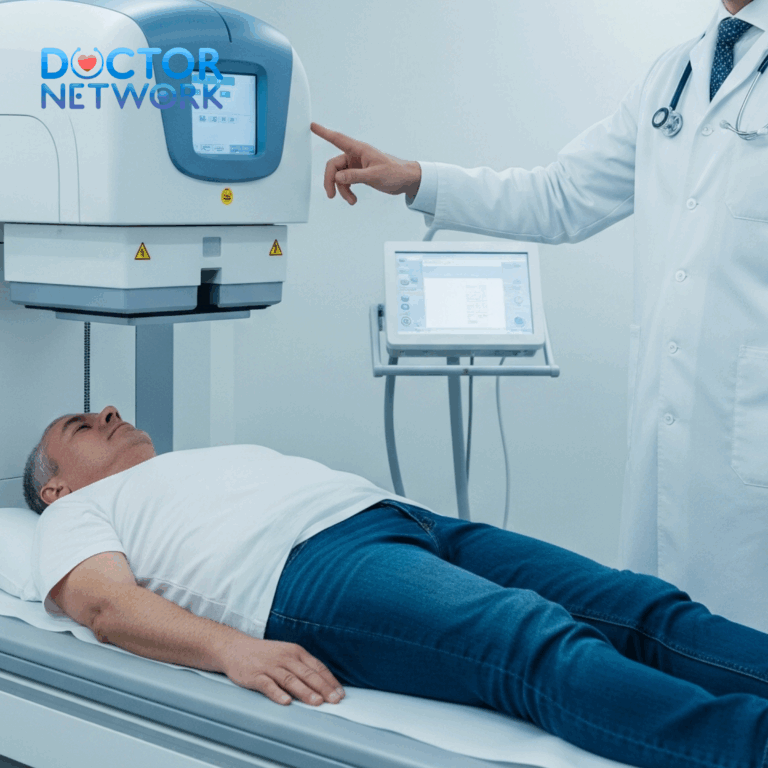When Is It Too Late to Fix a Broken Finger? Finger fractures represent one of the most common orthopedic injuries, affecting millions of people annually through sports activities, workplace accidents, and daily mishaps. The critical window for optimal treatment begins immediately after injury, as delayed intervention can lead to permanent functional impairment, chronic pain, and irreversible deformity. While broken bones will eventually heal naturally, the position in which they mend determines whether you’ll regain full hand function or face lifelong limitations.
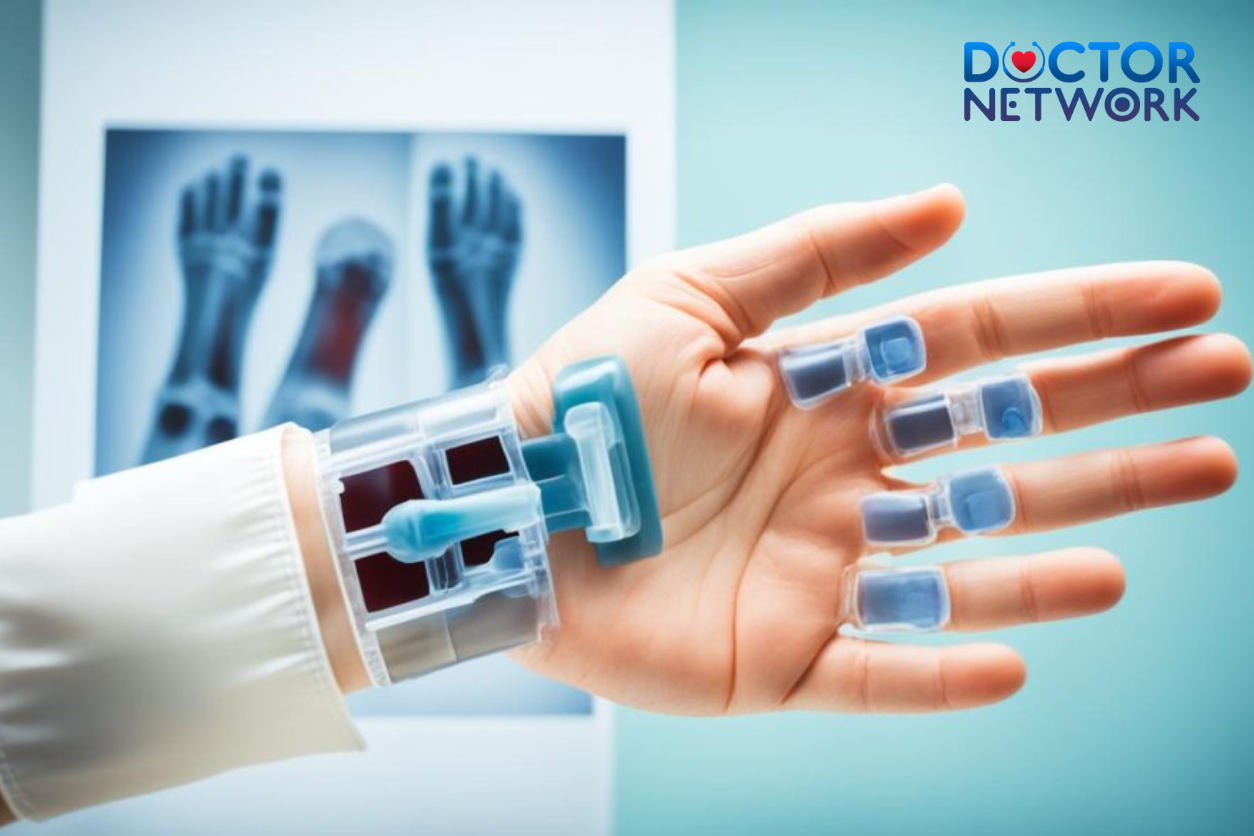
This comprehensive guide examines the crucial timeframes for finger fracture treatment, explores the consequences of delayed care, and provides expert insights into when intervention becomes significantly more complex. We’ll cover recognition of finger fractures, immediate treatment protocols, the concept of “too late” in fracture care, advanced treatment options for delayed cases, recovery expectations, and the broader implications of postponed medical attention.
Recognizing a Broken Finger: Symptoms and Diagnosis
Pain serves as the primary indicator of finger fracture, ranging from mild discomfort to severe, debilitating agony that intensifies with movement or pressure. Swelling typically develops within hours of injury, accompanied by characteristic bruising that may extend beyond the immediate fracture site. The injured digit often exhibits restricted mobility, stiffness, or complete inability to bend normally, while some patients experience numbness or tingling sensations.
Common Symptoms of Finger Fractures
The following clinical manifestations warrant immediate medical evaluation:
- Intense pain that worsens with movement or direct pressure
- Significant swelling extending beyond the injury site
- Visible bruising or discoloration around the affected area
- Limited range of motion or complete inability to move the finger
- Joint stiffness preventing normal flexion and extension
- Deformity or abnormal positioning of the digit
Emergency Signs Requiring Immediate Care
Certain symptoms demand urgent emergency department evaluation:
| Critical Symptom | Medical Significance | Required Action |
|---|---|---|
| Finger pointing at abnormal angle | Significant displacement requiring reduction | Emergency room immediately |
| Blue or pale coloration | Compromised circulation | Urgent vascular assessment |
| Numbness or tingling | Potential nerve damage | Immediate neurological evaluation |
| Open wound with visible bone | Compound fracture with infection risk | Emergency surgery consultation |
| Severe, unrelenting pain | Possible compartment syndrome | Immediate pressure monitoring |
Professional Diagnostic Process
Healthcare providers employ systematic examination techniques to assess finger fractures accurately. Physical examination includes evaluation of deformity, shortening, rotational malalignment, and the distinctive “scissoring” phenomenon where injured fingers overlap adjacent digits during flexion. Medical professionals assess neurovascular status, checking capillary refill, sensation, and pulse quality in the affected digit.
Radiographic imaging remains the gold standard for fracture diagnosis, providing detailed visualization of bone architecture, displacement patterns, and joint involvement. X-rays typically include anteroposterior, lateral, and oblique views to capture the complete fracture pattern. Advanced imaging techniques such as CT scans may be necessary for complex intra-articular fractures or when standard radiographs prove insufficient.
Semantic entities: finger fracture, digit injury, bone fracture, hand trauma, orthopedic emergency, radiographic assessment, clinical examination, neurovascular compromise, compartment syndrome, intra-articular fracture
Initial Treatment Methods for Finger Fractures
Immediate first aid measures significantly impact long-term outcomes, making proper initial care essential before professional medical evaluation. The primary principle involves avoiding any attempts at realignment or manipulation of the injured finger, as improper handling can worsen displacement or cause additional soft tissue damage.
Home First Aid Protocols
While awaiting medical attention, implement these evidence-based first aid measures:
- Immobilization: Gently tape the injured finger to an adjacent uninjured finger (buddy taping) using medical tape, creating a natural splint
- Elevation: Raise the affected hand above heart level to minimize swelling and promote venous drainage
- Ice application: Apply ice packs wrapped in cloth for 15-20 minutes every 2-3 hours to reduce inflammation and pain
- Pain management: Utilize over-the-counter analgesics such as acetaminophen or ibuprofen following package directions
- Wound care: Clean and dress any open wounds with sterile materials to prevent infection
- Jewelry removal: Remove rings, watches, or bracelets from the affected hand before swelling worsens
Critical precautions include avoiding food or drink consumption before medical evaluation, as emergency surgery may be required. Arrange transportation to medical facilities rather than driving yourself, as pain and limited hand function compromise safe vehicle operation.
Professional Medical Interventions
Healthcare providers utilize several treatment modalities based on fracture characteristics and patient factors:
Closed Reduction Techniques Medical professionals may perform closed reduction under local anesthesia, carefully manipulating displaced fracture fragments back into anatomical alignment. This procedure requires precise technique to avoid additional soft tissue injury while achieving optimal bone positioning.
Immobilization Methods Various immobilization devices serve different fracture patterns:
- Splints: Removable devices allowing wound care access and gradual mobilization
- Casts: Rigid immobilization for unstable fractures requiring complete restriction
- Buddy taping: Simple technique for stable, minimally displaced fractures
Surgical Interventions Complex fractures necessitate operative management using several fixation methods:
| Fixation Type | Indications | Advantages | Considerations |
|---|---|---|---|
| K-wire fixation | Unstable fractures, joint involvement | Minimally invasive, temporary | Requires later removal |
| Plate and screw fixation | Comminuted fractures, bone loss | Rigid fixation, early mobilization | Higher surgical complexity |
| Intramedullary screws | Spiral fractures, good bone quality | Preserves soft tissue, strong fixation | Limited applicability |
Surgical procedures typically require 30 minutes to several hours depending on complexity, with most patients returning home the same day. Post-operative care includes wound monitoring, pain management, and progressive rehabilitation protocols.
Hand Therapy Integration Certified hand therapists play crucial roles in fracture recovery, designing individualized rehabilitation programs addressing range of motion, strength, and functional activities. Early therapeutic intervention prevents joint stiffness, reduces scar tissue formation, and optimizes long-term outcomes.
Semantic entities: closed reduction, fracture immobilization, K-wire fixation, plate fixation, intramedullary fixation, hand therapy, certified hand therapist, buddy taping, post-operative care, rehabilitation protocols
The Concept of “Too Late”: What Happens When Treatment Is Delayed
No absolute time limit exists beyond which finger fracture treatment becomes impossible, as fractured bones will eventually heal through natural processes. However, the critical issue involves whether healing occurs in proper anatomical alignment to preserve optimal hand function. The concept of “too late” refers to missing the golden window of opportunity for simple, effective intervention that achieves the best possible functional recovery.
The Golden Window for Optimal Outcomes
Medical professionals recommend seeking treatment as soon as possible after injury, ideally within one week of trauma. Delays beyond this timeframe significantly impact treatment options and recovery trajectories, as the body’s natural healing processes begin stabilizing fracture fragments in their current positions.
Why Delays Rapidly Create Complications
Finger bones possess excellent blood supply and fracture surfaces typically maintain extensive contact, accelerating the callus formation process dramatically. Within just a few weeks, bony callus becomes sufficiently strong to maintain fracture fragments in their current alignment, making non-surgical realignment difficult or impossible.
Timeline of Healing Complications:
- Within 1 week: Optimal window for closed reduction and simple fixation
- 2-3 weeks: Callus formation begins, non-surgical reduction becomes challenging
- 4-6 weeks: Established callus makes closed reduction nearly impossible
- 3+ months: Malunion or nonunion patterns become fixed, requiring complex surgical correction
Primary Consequences of Treatment Delay
Malunion (Healing in Wrong Position) Malunion represents the most common complication of delayed fracture treatment, occurring when bones heal in improper alignment or rotation. This condition creates several functional problems:
- Visible deformity affecting hand appearance and self-confidence
- Severe functional impairment limiting grip strength and dexterity
- Restricted joint motion preventing normal finger flexion and extension
- Scissoring phenomenon where rotated fingers overlap during grip formation
- Joint surface damage predisposing to early arthritis development
Nonunion (Failure to Heal) Although less common in finger fractures due to excellent blood supply, nonunion can occur, particularly in complex injuries or patients with risk factors such as smoking, diabetes, or nutritional deficiencies.
Additional Complications:
- Joint stiffness from prolonged immobilization or inadequate rehabilitation
- Chronic pain from nerve entrapment or joint irregularities
- Strength reduction affecting grip and pinch capabilities
- Permanent functional limitations impacting work and recreational activities
Fracture-Specific Urgency Levels
Different fracture patterns require varying degrees of urgency:
Intra-articular Fractures (Joint Involvement) These injuries demand immediate attention to restore joint surface congruity and prevent post-traumatic arthritis. Even minor joint step-offs can cause significant long-term problems.
Open Fractures (Bone Exposure) Compound fractures require emergency management due to high infection risk and potential for bone loss or contamination.
Significantly Displaced Fractures Fractures with major displacement need prompt reduction to prevent soft tissue compromise and ensure proper healing alignment.
Minimally Displaced Fractures Even stable fractures benefit from early immobilization to prevent secondary displacement and ensure proper rehabilitation timing.
Semantic entities: malunion, nonunion, callus formation, golden window, intra-articular fracture, open fracture, displaced fracture, joint congruity, post-traumatic arthritis, scissoring phenomenon, functional impairment, treatment delay
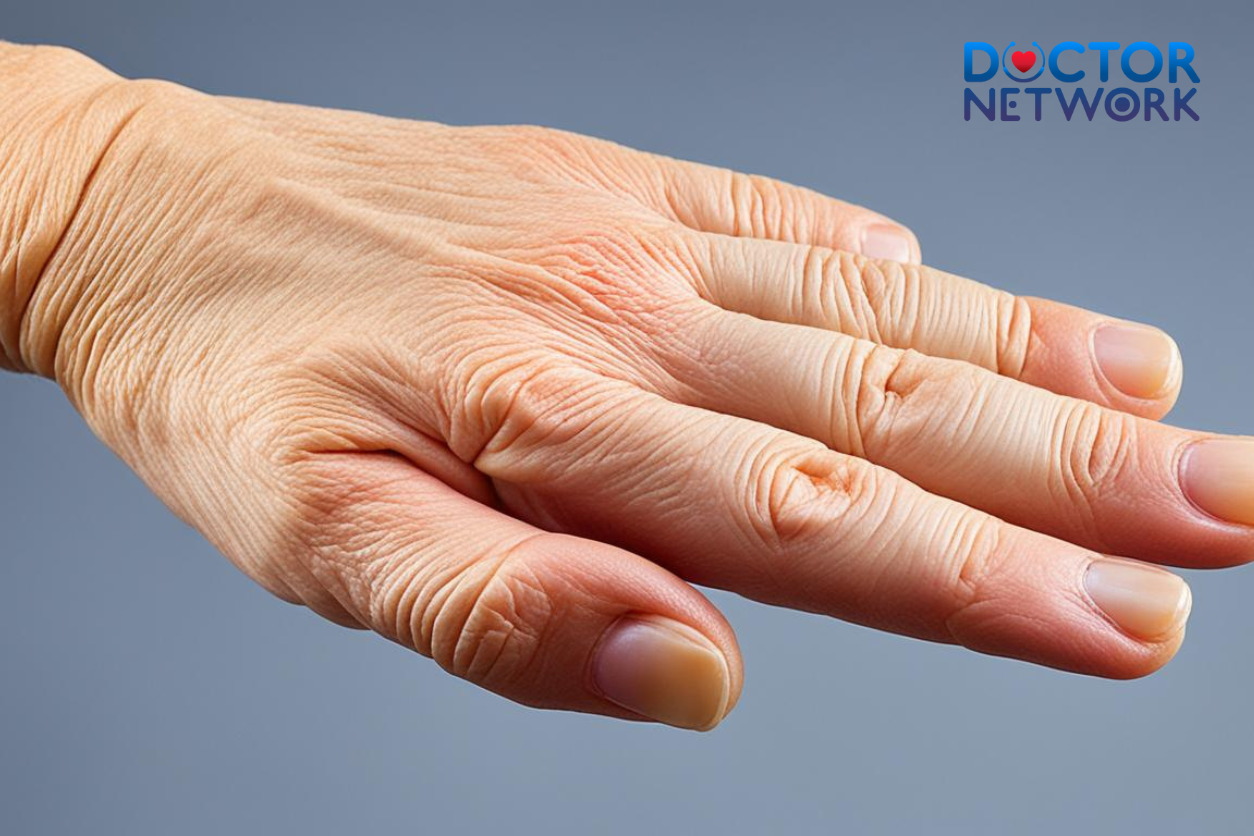
Treatment Options for Delayed Cases (Malunion and Nonunion)
Treatment possibilities exist even when fractures have healed incorrectly or failed to heal after months or years of neglect. However, surgical interventions for established malunions and nonunions involve significantly more complex procedures with higher risks and potentially limited functional improvement compared to timely initial treatment.
Corrective Surgery for Malunion
Malunion correction typically requires osteotomy procedures, where surgeons deliberately cut through improperly healed bone to reposition fragments in correct alignment. These complex operations involve several steps:
Surgical Planning Phase Advanced imaging including CT scans helps surgeons understand three-dimensional deformity patterns and plan precise correction angles. Computer-assisted surgical planning may be utilized for complex cases.
Osteotomy Procedures Surgeons perform controlled bone cuts at malunion sites, carefully repositioning fragments to restore proper anatomy. Fixation hardware such as plates, screws, or pins maintains the corrected position during healing.
Bone Grafting Considerations Some cases require bone grafting to fill defects created during realignment or to stimulate healing in areas with compromised blood supply.
Nonunion Management
Nonunion treatment focuses on stimulating bone healing through several approaches:
Surgical Debridement Surgeons remove scar tissue and non-viable bone from the nonunion site, creating fresh, bleeding bone surfaces that promote healing.
Bone Stimulation Techniques
- Electrical stimulation devices may accelerate bone formation
- Ultrasound therapy can enhance cellular activity at fracture sites
- Bone morphogenetic proteins provide biological signals for bone growth
Rigid Fixation Stable internal fixation eliminates motion at the nonunion site, allowing biological healing processes to proceed.
Success Rates and Expectations
Corrective surgery success rates vary based on several factors:
| Factor | High Success Predictors | Challenging Cases |
|---|---|---|
| Time since injury | Less than 1 year | Greater than 2 years |
| Bone quality | Good cortical bone | Osteoporotic bone |
| Previous surgeries | No prior operations | Multiple prior procedures |
| Patient compliance | Excellent follow-through | Poor adherence to protocols |
| Comorbidities | Healthy patients | Diabetes, smoking, steroid use |
While corrective procedures can improve function and reduce pain, complete restoration to pre-injury status may not always be achievable, particularly in cases with extensive joint damage or prolonged dysfunction.
Semantic entities: malunion correction, osteotomy, nonunion treatment, bone grafting, surgical debridement, bone stimulation, electrical stimulation, bone morphogenetic proteins, rigid fixation, corrective surgery, computer-assisted planning
Recovery Process and Prognosis After Treatment
Recovery from finger fractures involves a complex interplay of bone healing, soft tissue repair, and functional rehabilitation. The timeline and ultimate outcome depend heavily on injury severity, treatment timing, patient factors, and adherence to rehabilitation protocols.
Standard Recovery Timeline
Bone Healing Phase (6-8 weeks) Initial bone healing occurs through callus formation and remodeling, with radiographic evidence of union typically visible by 6-8 weeks post-injury. However, bone strength continues improving for several months as remodeling processes strengthen the repair site.
Functional Recovery Phase (3-12 months) Complete functional recovery requires 3-4 months for strength restoration and up to one year for complex injuries. Hand therapy plays a crucial role during this phase, addressing range of motion, strength, and functional activities.
Recovery Expectations for Delayed Treatment Cases
Patients receiving delayed treatment face significantly longer and more challenging recovery processes:
Extended Healing Times Corrective surgeries for malunion or nonunion typically require longer healing periods due to:
- More extensive soft tissue dissection
- Larger bone surfaces requiring healing
- Potential need for bone grafting
- Higher complexity of fixation hardware
Functional Limitations Even after successful corrective surgery, some permanent functional limitations may persist:
- Reduced range of motion due to prolonged stiffness and scar tissue formation
- Chronic pain from nerve irritation or joint irregularities
- Strength deficits affecting grip and fine motor control
- Arthritis development in affected joints over time
Rehabilitation Protocols
Early Mobilization Phase Certified hand therapists initiate controlled movement exercises to prevent joint stiffness while protecting healing tissues. This phase focuses on:
- Gentle passive range of motion
- Edema control techniques
- Scar tissue management
- Pain modulation strategies
Strengthening Phase Progressive resistance exercises restore grip strength, pinch power, and endurance. Functional activities simulate work and recreational demands.
Return to Activity Phase Gradual return to full activities based on individual healing progress and functional requirements. Workplace modifications may be necessary during this transition.
Factors Affecting Prognosis
Several variables influence recovery outcomes:
Patient-Related Factors:
- Age and general health status
- Smoking history and nutritional status
- Compliance with therapy protocols
- Psychological factors and motivation
Injury-Related Factors:
- Fracture pattern and displacement
- Soft tissue damage extent
- Time from injury to treatment
- Presence of complications
Treatment-Related Factors:
- Quality of initial reduction
- Fixation method effectiveness
- Post-operative management
- Rehabilitation program quality
Semantic entities: bone healing, callus formation, functional recovery, hand therapy, range of motion, strength restoration, chronic pain, arthritis development, early mobilization, certified hand therapist, rehabilitation protocols, return to activity, prognosis factors
Comprehensive Impact of Treatment Delay
Beyond the immediate medical consequences, delayed treatment of finger fractures creates far-reaching effects that extend into financial, psychological, and social domains. Understanding these broader implications helps patients appreciate the full scope of timely medical intervention.
Financial Ramifications
Increased Healthcare Costs Delayed treatment significantly escalates medical expenses through:
- Complex surgical procedures requiring specialized equipment and longer operative times
- Extended hospital stays for complicated cases
- Multiple follow-up appointments and imaging studies
- Prolonged rehabilitation therapy sessions
- Potential need for additional corrective procedures
Lost Productivity and Income Extended recovery periods result in:
- Longer work absences affecting earnings
- Reduced work efficiency during recovery
- Potential job modifications or restrictions
- Decreased career advancement opportunities
- Increased dependence on disability benefits
Psychological and Social Impact
Emotional Consequences Patients frequently experience:
- Frustration and disappointment with prolonged recovery
- Anxiety about permanent functional limitations
- Depression related to activity restrictions
- Loss of confidence in hand function
- Regret about delayed treatment decisions
Quality of Life Effects Functional limitations impact:
- Recreational activities requiring fine motor skills
- Musical instrument performance for musicians
- Sports participation and athletic performance
- Occupational tasks demanding manual dexterity
- Activities of daily living such as writing, typing, and self-care
Long-term Disability Considerations
Permanent Impairment Ratings Medical professionals may assign permanent impairment ratings based on:
- Range of motion deficits
- Strength reduction measurements
- Functional capacity limitations
- Pain and sensory changes
Vocational Rehabilitation Needs Some patients require vocational counseling and retraining for:
- Career transitions due to hand limitations
- Workplace accommodation needs
- Adaptive equipment training
- Alternative employment exploration
Prevention Through Education
Public Awareness Campaigns Educational initiatives should emphasize:
- Recognition of fracture symptoms
- Importance of immediate medical evaluation
- Consequences of treatment delay
- Proper first aid techniques
Healthcare Provider Education Medical professionals need training in:
- Early fracture recognition
- Appropriate referral patterns
- Patient education techniques
- Rehabilitation protocols
Semantic entities: financial impact, healthcare costs, lost productivity, psychological consequences, quality of life, permanent impairment, vocational rehabilitation, public awareness, healthcare education, disability considerations
Conclusion
Finger fractures, while common, demand immediate medical attention to achieve optimal functional outcomes and prevent long-term complications. The concept of “too late” in fracture care represents the critical window where simple, effective treatments can restore normal hand function, rather than an absolute point of no return.
Early intervention within the first week of injury provides the best opportunity for successful closed reduction, straightforward fixation, and complete functional recovery. Delays beyond this golden window significantly increase the likelihood of malunion, nonunion, and permanent functional impairment, requiring complex surgical interventions with less predictable outcomes.
The consequences of delayed treatment extend far beyond the physical realm, encompassing financial hardship, psychological distress, and reduced quality of life. While corrective procedures remain possible even years after injury, the complexity, cost, and limited success rates make prevention through timely treatment the preferred approach.
Key takeaways for optimal outcomes:
- Seek immediate medical evaluation for suspected finger fractures
- Follow prescribed treatment protocols exactly as directed
- Engage actively in rehabilitation programs
- Understand that early intervention provides the best prognosis
- Recognize that delayed treatment, while still possible, carries significant risks and limitations
If you suspect a finger fracture, don’t attempt self-treatment or ignore the injury. Contact a qualified orthopedic specialist or hand surgeon immediately to preserve your hand function and prevent lifelong complications. Remember, the decisions you make in the first few days after injury will impact your hand function for the rest of your life.
Semantic entities: optimal outcomes, medical attention, functional recovery, treatment protocols, rehabilitation programs, orthopedic specialist, hand surgeon, injury prevention, early intervention, lifelong complications
The 5 most frequently asked questions about the topic “When is it too late to fix a broken finger?”
1. When is it too late to fix a broken finger?
You should see a doctor as soon as possible, ideally within one week of the injury. There is no exact time defined as “too late” because the severity and type of fracture vary. However, if treatment is delayed too long, doctors may have to let the bone heal in its current position or perform surgery to correct deformities, and the chances of full recovery may decrease.
2. What happens if a broken finger is left untreated for a long time?
If left untreated, the finger may develop chronic pain, stiffness, loss of mobility, and deformity due to improper bone healing (malunion) or failure to heal (nonunion). Serious complications such as bone infection or permanent disability can also occur.
3. Can a broken finger be treated if it has been left untreated for a long time?
It is possible to treat a broken finger even after a long delay, especially through surgery to realign the bones and joints. Doctors will take X-rays to assess the condition and recommend the appropriate treatment. However, late treatment is usually more complicated, and the recovery outcome might not be as good as early intervention.
4. How long does it take to recover from a broken finger?
Recovery time typically ranges from several weeks to up to a year, depending on the severity of the injury and the treatment method. After treatment, physical therapy may be necessary to reduce swelling, improve joint stiffness, and restore finger function.
5. Should I try to treat a broken finger at home?
You should not attempt to treat a broken finger at home as it may worsen the condition. It is important to visit a healthcare facility for proper diagnosis and treatment to avoid long-term complications such as chronic pain, deformity, and loss of finger function.
Scientific References
General Principles:
Early Intervention is Best: Most experts agree that the sooner a finger fracture is diagnosed and treated, the better the outcome, with a lower risk of complications and a quicker return to function.
“Golden Window” for Non-Surgical Reduction: For displaced fractures requiring closed reduction (non-surgical realignment) and splinting/casting, the ideal time is typically within the first 1-2 weeks post-injury. After this, callus (new bone formation) begins to form, making manipulation more difficult or impossible.
Surgery: If surgery is needed, earlier intervention is also generally preferred. However, surgery can still be performed later, but it may be more complex, and functional recovery might not be as optimal.
When is it Considered “Too Late” or More Difficult?
When the Bone Has Begun to Heal Incorrectly (Malunion):
Timeframe: Usually after 2-3 weeks, the bone begins to consolidate. If not properly aligned, it will heal in a displaced position (malunion).
Consequences: Deformity of the finger, limited range of motion, chronic pain, reduced grip strength.
Research/Evidence:
Textbooks: Standard hand surgery textbooks emphasize the importance of early reduction of displaced fractures to prevent malunion.
Source: Wolfe SW, Hotchkiss RN, Pederson WC, Kozin SH, Cohen MS. (2017). Green’s Operative Hand Surgery. 7th ed. Elsevier. (Chapters on phalangeal and metacarpal fractures).
Studies on Malunion Treatment: Research on treating established malunions (e.g., corrective osteotomy) shows these are more complex procedures than acute fracture care.
Example: Stern, P. J. (1997). Complications of internal fixation of hand fractures. Orthopedic Clinics of North America, 28(3), 369-377. (This article discusses complications, including malunion and its management).
Example: Jupiter, J. B., & Ring, D. (1996). Treatment of malunion and nonunion of the metacarpals and phalanges. Hand Clinics, 12(4), 779-791. This paper describes the challenges and techniques for treating malunions, implying that reaching this stage is suboptimal.
When Joint Stiffness Has Set In (Contracture):
Timeframe: Prolonged immobilization, especially if improper or without early guided therapy, can lead to joint stiffness, often becoming significant after 3-4 weeks.
Consequences: Inability to fully bend or straighten the finger.
Research/Evidence:
A fundamental principle in hand rehabilitation is early motion (once medically cleared) to prevent stiffness.
Source: Skirven, T. M., Osterman, A. L., Fedorczyk, J. M., & Amadio, P. C. (Eds.). (2011). Rehabilitation of the Hand and Upper Extremity. 6th ed. Elsevier Mosby. (Chapters on post-fracture rehabilitation).
When the Fracture Fails to Heal (Nonunion):
Timeframe: If, after 3-6 months, there’s no radiological evidence of bone healing, it may be considered a nonunion.
Consequences: Persistent pain, instability of the finger, loss of function.
Research/Evidence:
Source: Ring, D., & Allende, C. (2004). Nonunion of the phalanges and metacarpals. Clinical Orthopaedics and Related Research®, 425, 77-85.
Summary: This study reviews risk factors and treatment outcomes for nonunions in hand and finger bones, highlighting that this is a complication often requiring complex surgical intervention (e.g., bone grafting and internal fixation).
Neglected Fractures:
These are cases where treatment has been delayed for an extended period (several months to years).
Consequences: Severe deformity, profound functional loss, chronic pain, and treatment becomes extremely challenging with often limited results.
Research/Evidence:
Source: Al-Qattan, M. M. (2000). Neglected phalangeal fractures. The Journal of Hand Surgery: British & European Volume, 25(3), 271-274.
Summary: This study reports on cases of neglected phalangeal fractures and the difficulties encountered in restoring function, even with surgical intervention.
Kiểm Duyệt Nội Dung
More than 10 years of marketing communications experience in the medical and health field.
Successfully deployed marketing communication activities, content development and social networking channels for hospital partners, clinics, doctors and medical professionals across the country.
More than 6 years of experience in organizing and producing leading prestigious medical programs in Vietnam, in collaboration with Ho Chi Minh City Television (HTV). Typical programs include Nhật Ký Blouse Trắng, Bác Sĩ Nói Gì, Alo Bác Sĩ Nghe, Nhật Ký Hạnh Phúc, Vui Khỏe Cùng Con, Bác Sỹ Mẹ, v.v.
Comprehensive cooperation with hundreds of hospitals and clinics, thousands of doctors and medical experts to join hands in building a medical content and service platform on the Doctor Network application.











